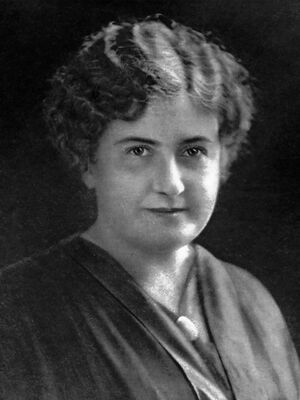Maria Montessori

Maria Montessori é uma chela da Mãe Maria e, ao usar o seu manto, estabeleceu os fundamentos da educação dos mestres ascensos para a era de Aquário. Como mensageira da hierarquia na área da educação, recebia instruções diretamente da Mãe Maria, de Jesus e de Kuthumi.
Maria Montessori nasceu na Itália, em 1870, e foi a primeira médica italiana. Quando trabalhava em Roma, recebeu a incumbência de cuidar das crianças de um jardim de infância, em um bairro pobre da cidade. Ao observar os pequeninos, ela desenvolveu o trabalho que ficou conhecido como Método Montessori.
Maria Montessori percebeu nas crianças qualidades diferentes e específicas, que ninguém percebera antes. E constatou que, em um ambiente apropriado e sob condições adequadas, essas qualidades podem manifestar-se.
One of the first things she noticed when dealing with children was that they would rather work than play. Children are very industrious, and if their work is organized, they can develop inner patterns that assist their development.
Children have great power for concentration and a tremendous love for order. Children between the ages of two and seven are great creatures of ritual. They love to do things in order. The goal of the child is not to get the job done, but to do it systematically. Montessori understood that the patterns of order and logic that are developed in the child through physical motion later enhance the child’s ability to learn, to concentrate and to study.
Montessori found that children have a keen sense of touch, that they learn with their hands more than they even learn with their eyes, and so she developed systems of what she called sensorial development. Children also like freedom of choice. The Montessori classroom is designed to allow each child to select the set of blocks or the training material that he will then use at that specific moment—it is a cosmic moment—when his soul is ready to develop around that particular point.
Children age two and one-half through six are all in one classroom so that the younger children can see the more advanced work of the older children and they can learn from their example. A Montessori teacher’s role is to direct the child toward the exercises.
In a Montessori classroom you will find little children at their tables preoccupied for great lengths of time, concentrating on their lessons. They have an amazing power of concentration. They learn mathematics with concrete equipment such as beads or blocks designed to teach the association of numerals and quantity. They learn writing and reading, but they do it according to the pattern of their own unique inner development. Children are not rushed or forced to do something that does not come easily and naturally to them. The teacher’s role is to encourage independent learning as the child listens to his own inner teacher. Maria Montessori discovered that the call of the universal child is, “Help me to do it myself.”
All of these things were revealed to Maria Montessori by the children themselves. She said that all she did was watch the children, and they taught her the method.
The Montessori method is intended to bring out the Christ potential of the child, as the child follows the direction of the inner teacher and selects in the classroom certain equipment and exercises that are appropriate for fulfillment of the inner and spiritual needs of the child and to bring forth the inner attainment. The combined freedom and order in the Montessori classroom is the true Aquarian-age education.
The Montessori method for children was inspired upon Maria Montessori by Mother Mary. Mary explained that this was the method she had devised with Elizabeth for teaching John the Baptist and Jesus when they were children.
Sources
Mark L. Prophet and Elizabeth Clare Prophet, The Masters and Their Retreats, s.v. “Maria Montessori.”
